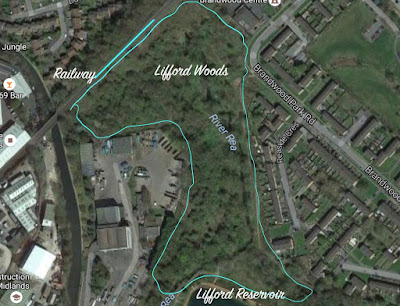"a bad plant": A perspective.
How absurd, the idea that a plant is anything other than a life giving, life preserving entity, the essence of life, without which there is no life.
Richard Mabey provides a terrific account in 'A Cabaret of Plants' (BOTANY AND THE IMAGINATION) PROFILE BOOKS 2015.
And whilst many of us celebrate plants intensely and joyously, some are preoccupied with total disdain towards certain species; the 'Triffid syndrome' might be applied here as a concept approaching an 'irrational fear leading to a concern that certain plants will, if left to their own devises, consume human babies'.
A few local 'triffids' are evident at this time of year, notably Japanese Knotweed, Himalayan Balsam and the most recent traveller, Giant Hogweed.
Our friendly hog, Heracleum sphondylium, seems to be an accepted plant at the edge of river, woodland or meadow, but is often reported as 'Giant' because of its ability to grow up to 2 metres. But THE Giant, Heracleum mantegazzianum can grow up to 5 metres, with a somewhat imposing and threatening glare alongside; leaf, flower and stem have an aggressive appearance. Both are members of the wonderful carrot family, which boasts many species locally including Wild Carrot, Hemlock and Ground Elder.
Hemlock, (Conium maculatum) likewise, can be found at Highbury and has received persecution for fear that it will be consumed.
The 'Wildlife Trust website suggests that Hemlock is "A notoriously poisonous plant". This notoriety is largely due, I suspect, to the story that the Greek philosopher Soctates was executed with a potion of Hemlock; but I find few accounts of modern day incidents. The Poison Garden website provides some interesting accounts - http://www.thepoisongarden.co.uk/atoz/conium_maculatum.htm
To learn more about Japanese Knotweed check out the following link
Richard Mabey provides a terrific account in 'A Cabaret of Plants' (BOTANY AND THE IMAGINATION) PROFILE BOOKS 2015.
And whilst many of us celebrate plants intensely and joyously, some are preoccupied with total disdain towards certain species; the 'Triffid syndrome' might be applied here as a concept approaching an 'irrational fear leading to a concern that certain plants will, if left to their own devises, consume human babies'.
A few local 'triffids' are evident at this time of year, notably Japanese Knotweed, Himalayan Balsam and the most recent traveller, Giant Hogweed.
 |
| Side by side, Rea Valley Hogweed at Ten Acres (foreground left) and the giant cousin (middle ground and left) Photo 8th June. |
There is certainly a mixed reception with this family of plants, currently classified as Apiaceae and previously Umberlliferae; and whilst Wild Parsnip (Pastinaca sativa) might be a relatively new addition to Highbury Park, like all members of this family, it should be recognised for its photo-sensitive properties, as the sap of the plant contains photo-sensitive chemicals (Furanocoumarins) such as Xanthotoxin.
 |
| Wild parsnip |
 |
| at Highbury pool (photo 20th June) |
Hemlock, (Conium maculatum) likewise, can be found at Highbury and has received persecution for fear that it will be consumed.
The 'Wildlife Trust website suggests that Hemlock is "A notoriously poisonous plant". This notoriety is largely due, I suspect, to the story that the Greek philosopher Soctates was executed with a potion of Hemlock; but I find few accounts of modern day incidents. The Poison Garden website provides some interesting accounts - http://www.thepoisongarden.co.uk/atoz/conium_maculatum.htm
https://www.jksl.com/blog/is-japanese-knotweed-a-problem-in-japan
Himalayan balsam details can be found here - https://gobotany.newenglandwild.org/species/impatiens/glandulifera/
and for general hogweed chat try this -
https://www.thebotanist.com/articles/common-hogweed
and for general hogweed chat try this -
https://www.thebotanist.com/articles/common-hogweed



Comments
Post a Comment